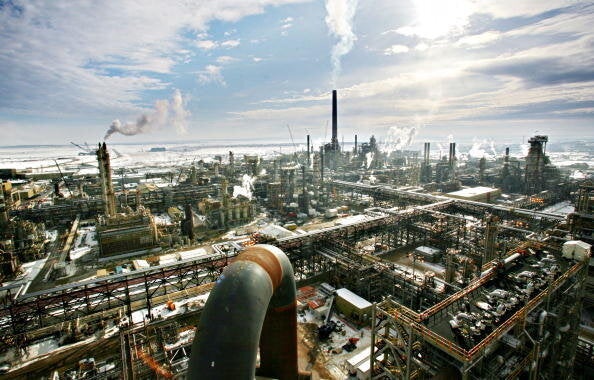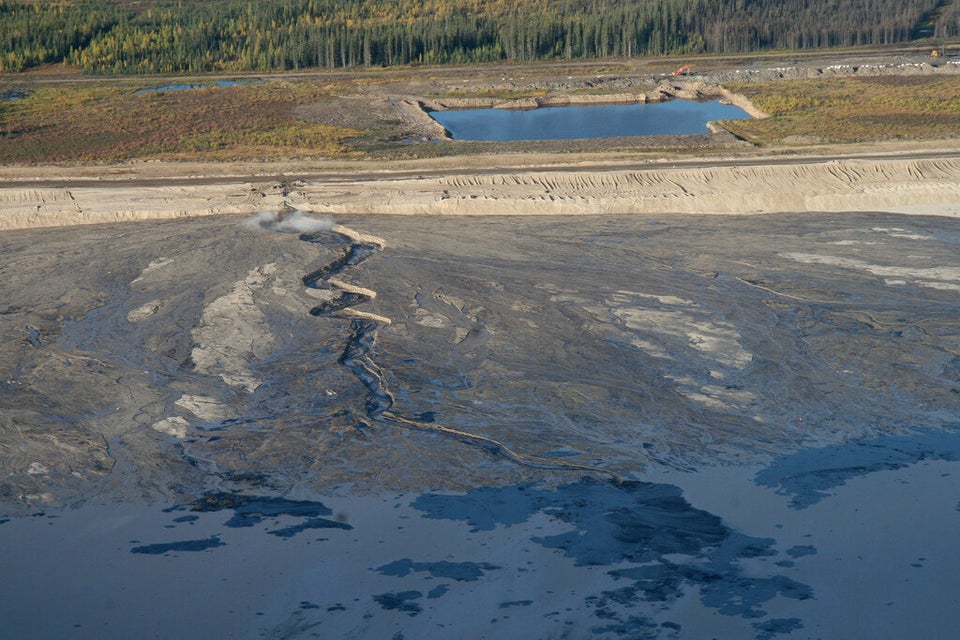
It's been a bad week for news coming out of the Alberta oilsands.
In the span of a day Environment Canada released research indicating contaminants from Alberta oilsands activity are traveling farther than previously thought and IHS CERA, a U.S.-based energy research group, released findings that Canadian oilsands release more greenhouse gases than previously thought.
According to the Edmonton Journal, federal researchers have found evidence that contaminants from Alberta's oilsands are traveling up to 100 kilometres and settling on the bottom of remote lakes.
"That means the footprint is four times bigger than we found," David Schindler, an aquatic scientist at the University of Alberta, told the Journal.
Schindler's research in 2010 found that dangerous contaminants were travelling more than 50 kilometres from projects in Northern Alberta. His team also found snow near the oilsands that had been polluted and in 2009 his team discovered a fish with a tumor that may have been linked to contamination from the oilsands, according to the CBC.
Story continues after the slideshow...
Derek Muir, a senior Environment Canada scientist and authority on chemical contaminants, told the Journal that his team of researchers studied six undisturbed lakes for contaminants; five within 35 kilometres of oilsands activity and another lake 100 kilometres away. They found that contaminants found in the lake bed sediment have climbed 2 to 23 times over 1960s levels.
"To see something outside the 50-kilometre zone was a bit of a surprise," Muir told the Journal about the findings as part of the Joint Canada-Alberta Implementation Plan for Oilsands Monitoring. "Having said that I have to caution it was only one lake."
Muir did note, however, that contaminants were lower than "guideline limits" in five out of the six lakes (excluding the one closest to oilsands activity) and that the contamination levels are comparable to those found in urban areas.
Edmonton-Stranthcona MLA and NDP environment critic Rachel Notley told the Journal that the provincial government needs to take action on pollution monitoring, and fast.
“What should be happening is the government is immediately imposing more aggressive standards around air quality measures and air quality control measures,” Notley said.
Notley said the Alberta government should not wait for the environmental monitoring agency promised last month, adding that she thinks it may take the province years to establish a system before putting it into action.
However, Environment and Sustainable Resource Development minister Diana McQueen says the Alberta government will take its time - anywhere from six months to two years to get the agency in place.
“The important part is that we set it up, that we get it set up right and properly,” McQueen told the Journal. “This is going to be here for the long term, just starting in the oilsands region and then across the province.
“The science advisory group will be able to look at the results and give us feedback from a science perspective and the data that’s collected.”
Alberta Environment spokesperson Erin Carrier told CBC the government takes the findings very seriously.
“We recognize that there is naturally occurring bitumen in the area. But we also recognize that with the development of oilsands in the area, that we do have to monitor,” said Carrier.
These findings are being presented to the Society of Environmental Toxicology and Chemistry in Long Beach, Calif. this week.
And if that weren't enough news about pollution and contamination, Reuters is reporting that Canadian oilsands refined in the U.S. release 9 per cent more planet-warming gases than crudes processed in the U.S.
This differs from 2010 IHS CERA research that suggested Canadian crude refined in the States is only 6 per cent higher than oilsands from the U.S.
However, by analyzing data from government, industry and academic sources, IHS CREA says carbon emissions from Canadian crude remain similar to those of many other crude oils refined in the U.S., including Iraq, Venezuela and Nigeria.
“Although the numbers have shifted slightly … the relative position of the oil sands compared to all the other sources of crude hasn’t changed much,” IHS CERA director Jackie Forrest told Reuters.
The numbers aren't sitting right with environmental groups, though, many who oppose Canadian oilsands crude operations, believing that it is higher in emissions.
Bill McKibben, an author and environmental activist, told Reuters oilsands fuel is some of “the dirtiest fuel on Earth.”
The Natural Resources Defense Council, an environmental group, has previously said that the emissions of the Canadian oilsands refined in the U.S. are eight to 37 per cent higher than other crudes.
However, the Canadian Association of Petroleum Producers is not worried about the higher findings.
CAPP Vice President Greg Stringham told Reuters that while he sees the average as being in a similar range to other crudes, "it does show that we need to push on the technology side to make sure that we continue to drive down to our objective to get that number smaller."
Also on HuffPost


